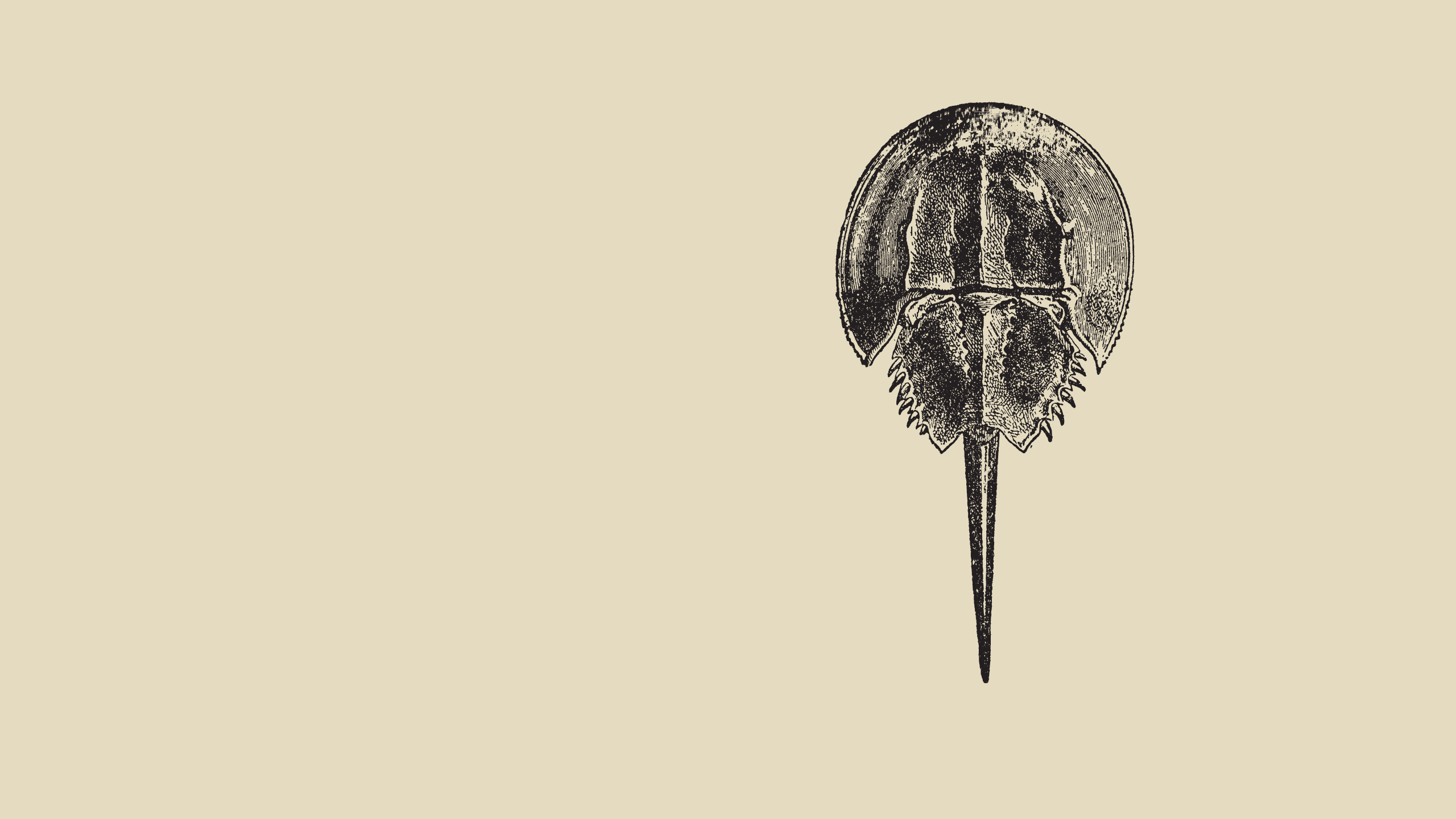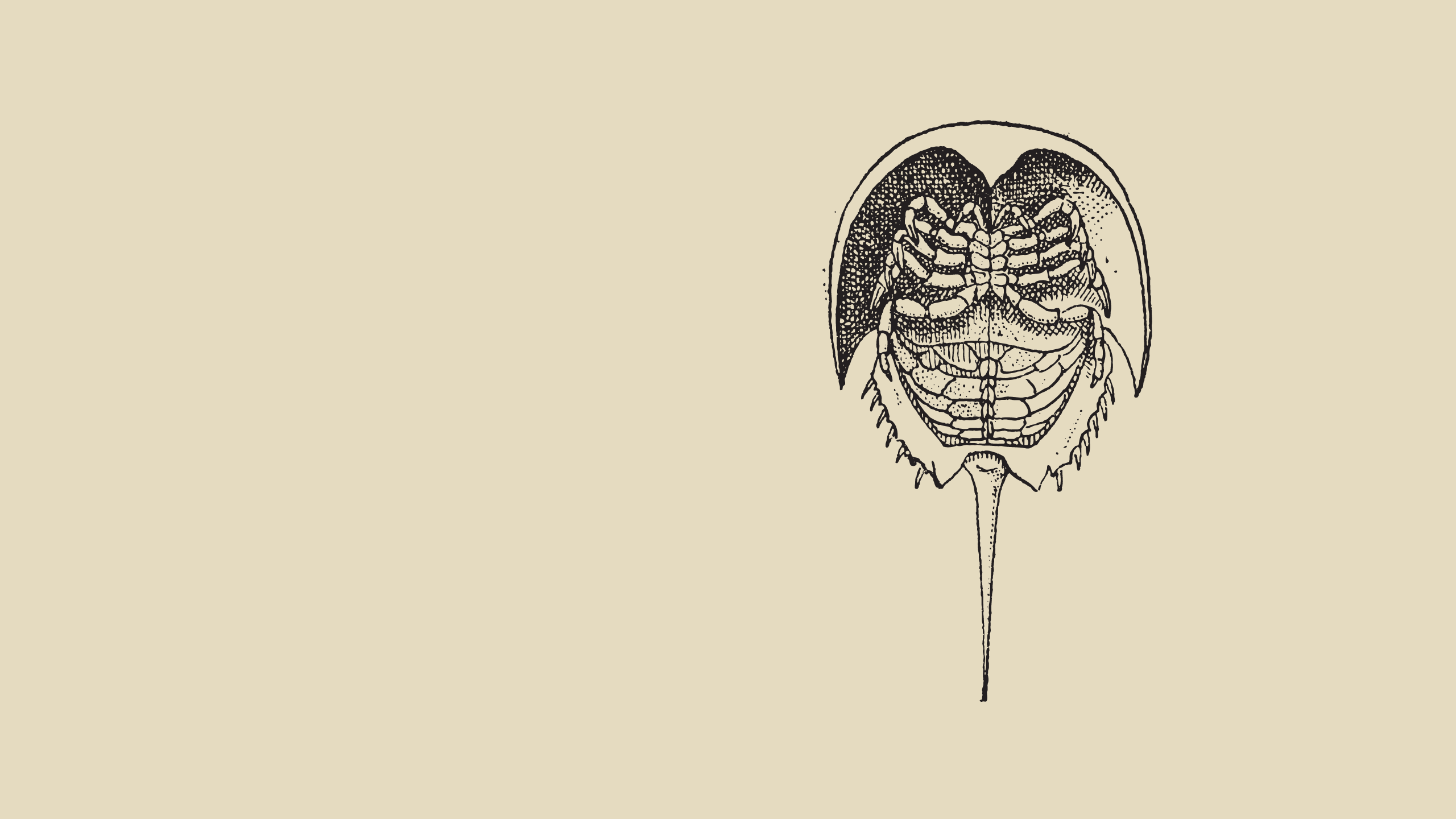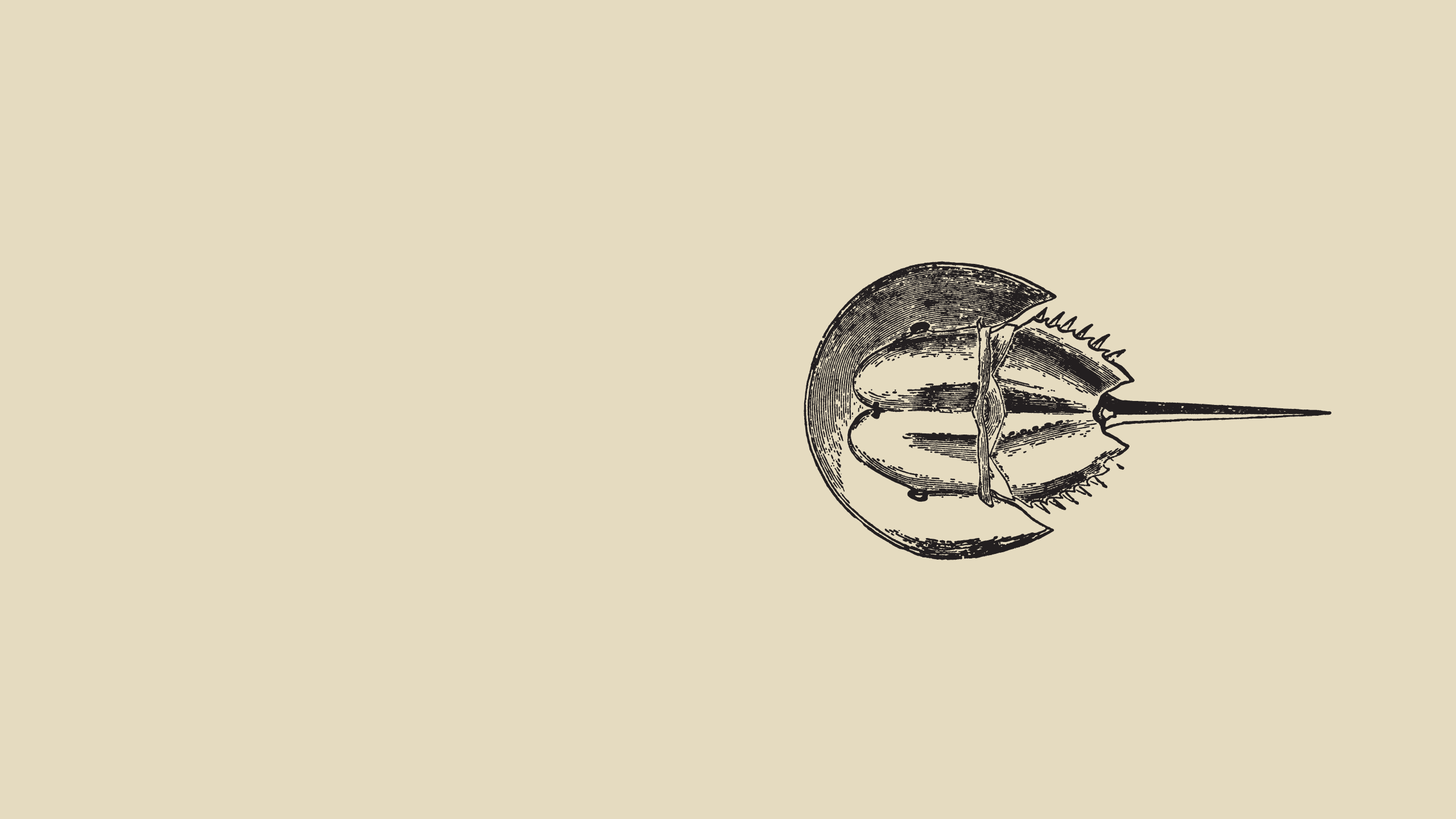Horseshoe crabs must be protected.
It's time to give back to a species that's given the world so much.
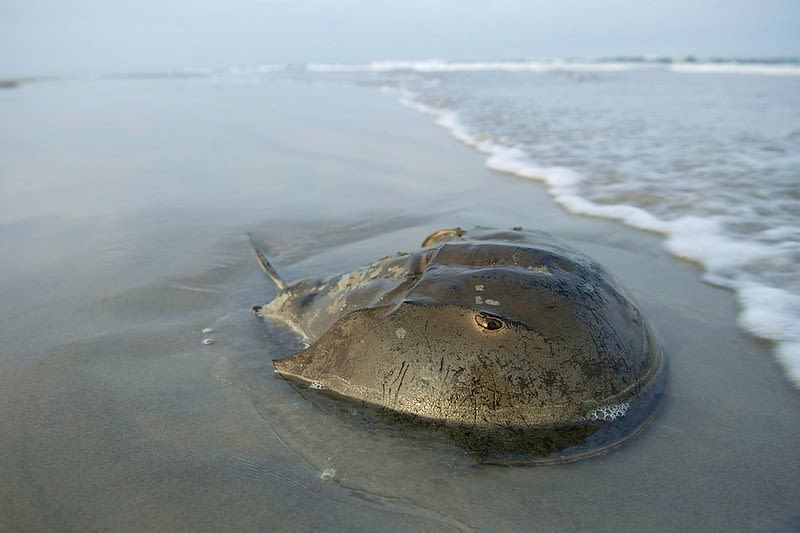
Simply put, horseshoe crabs are amazing. These living fossils are older than dinosaurs; they have survived five mass extinctions over the past 450 million years.1 They have ten legs, nine eyes, and one very valuable asset to humans: milky blue blood.
Why is horseshoe crab blood blue? And why do humans care about it? The answer is one in the same: horseshoe crab blood has unique immune cells in it that are hyper-sensitive to toxic bacteria. When these cells are exposed to bacteria, they form a clot around it and prevent it from spreading.2 Since the 1970s, scientists have been using these special cells to test the sterility of pharmaceutical and medical devices, including vaccines and surgical tools.3 The horseshoe crab blood ensures that there is no harmful bacterial contamination (also called endotoxins) on anything that is going to be injected into a human’s body. Consequently, horseshoe crabs are key to making sure vaccines, injections, and surgical tools are safe from harmful bacteria!
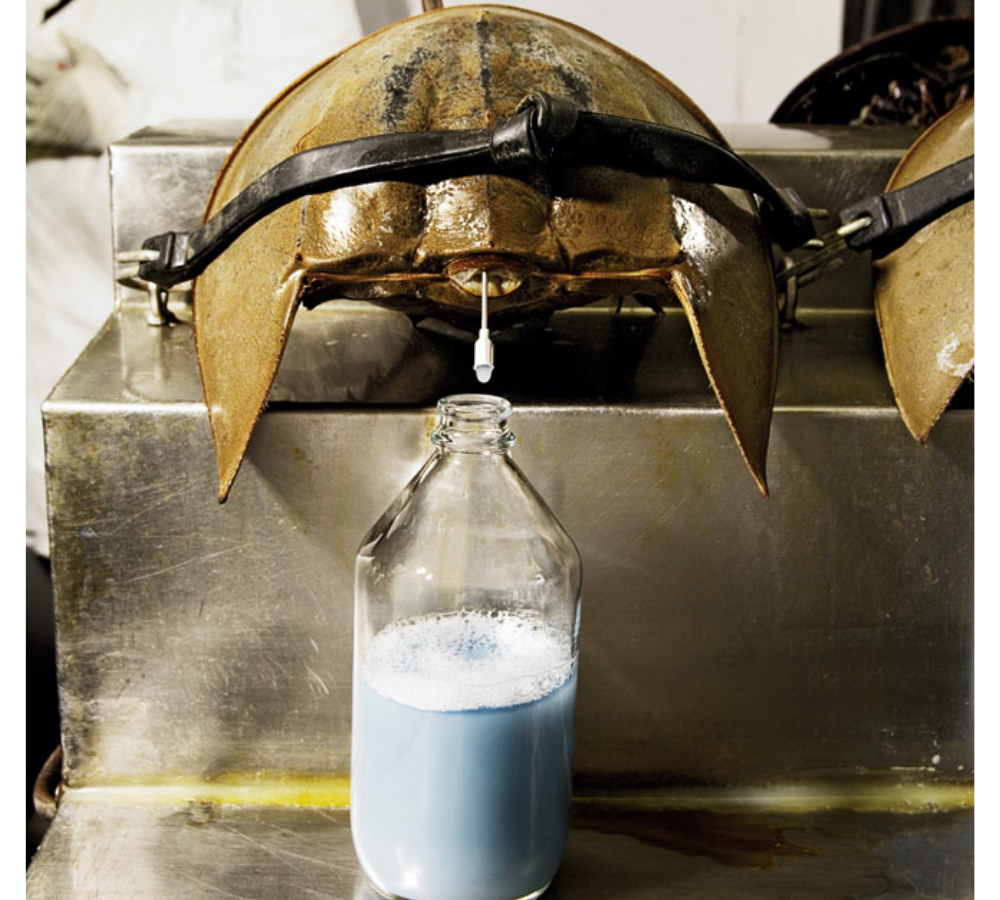
Horseshoe crab blood extraction. | Image credit: Andrew Tingle
Horseshoe crab blood extraction. | Image credit: Andrew Tingle
To meet the demand for endotoxin tests, horseshoe crabs are harvested in bulk, taken into labs, and drained of 30% of their blood supply.4 The horseshoe crabs are then released back into the wild, where conservative estimates indicate that 15% of them die.5 As human population has grown over time, the demand for endotoxin testing has generally increased, which in turn has led to an increase in the harvesting of biomedical horseshoe crabs.
With the exception of 2016, biomedical horseshoe crab deaths have exceeded the mortality threshold set by the Atlantic States Marine Fisheries Commission every year from 2007-2017 (the most recent year for which data is released).6 In 2016 there were temporary changes in production causing a decrease in horseshoe crab harvest and subsequent death rates.
The high number of deaths from biomedical harvesting of horseshoe crabs is not just a problem for humans. Horseshoe crabs also play an important role in their ecosystems; they nourish fish and crustaceans, turtles, and shorebirds.
The image on the right shows selected species that eat horseshoe crabs or their eggs. In reality, horseshoe crabs and their eggs are a food source to a far greater number of species, though the exact number is still unknown.
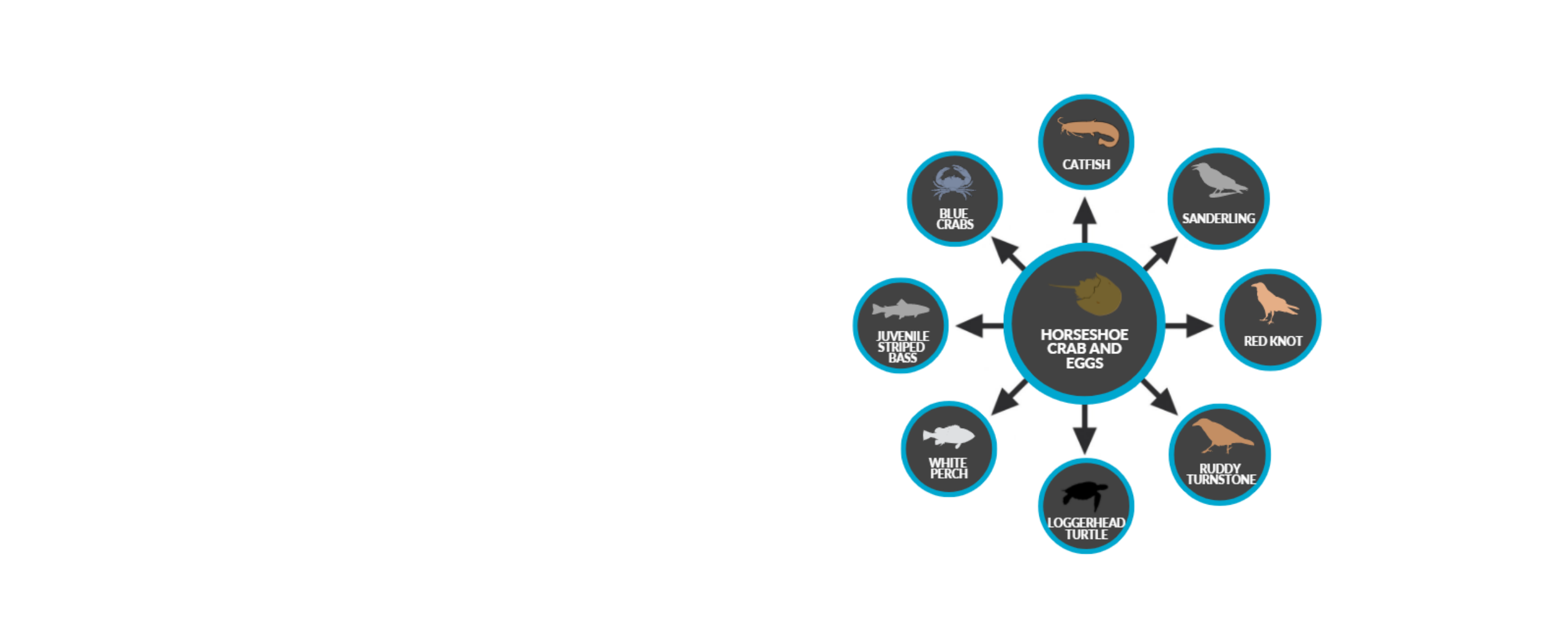
Shorebirds are particularly reliant on horseshoe crab eggs. Sanderlings, ruddy turnstones, and red knots each eat thousands of horseshoe crabs a day to reach the body masses they need to complete their northern migrations.7
Although these shorebirds eat large quantities of eggs, research found that they do not cause long-term depletion of horseshoe crab eggs.8 Each female horseshoe lays about 4,000 eggs per cluster, and lays clusters about 5 times each night during spawning.9 In total, some females lay up to 100,000 eggs in a season.10
Of the shorebird species that eat horseshoe crab eggs, the relationship between red knots and horseshoe crabs has been the most thoroughly studied.
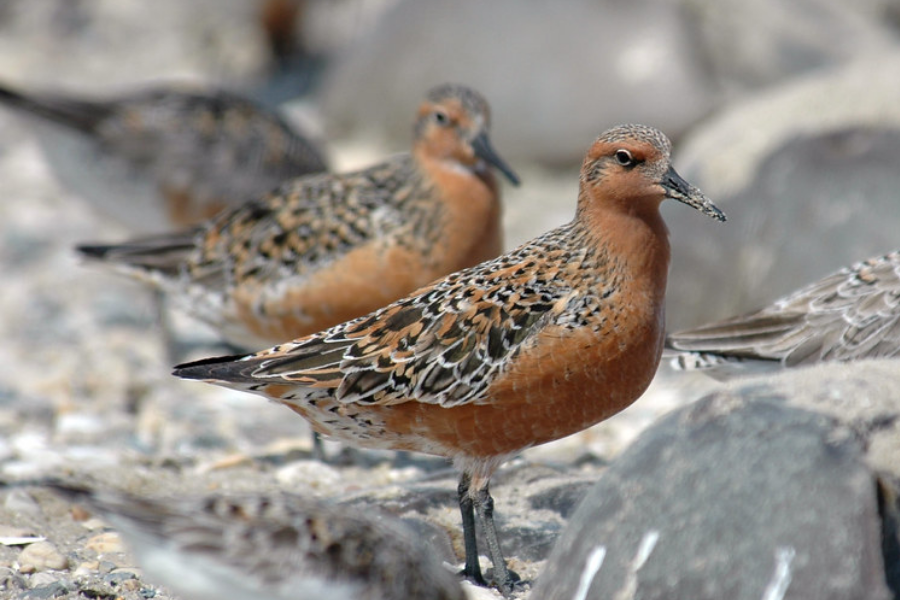
Red knots surrounded by horseshoe crabs. | Image credit: U. S. Fish and Wildlife Service - Northeast Region
Red knots surrounded by horseshoe crabs. | Image credit: U. S. Fish and Wildlife Service - Northeast Region
Red knots migrate over 9,000 miles from South America to the Arctic for breeding.11 On this journey they stop only once to “refuel” in Delaware Bay. Red knots arrival in Delaware Bay coincides with the time of year that horseshoe crabs overtake the beaches to spawn. Red knots feast on the horseshoe crab eggs since they need to gain about 80 g of mass (which is equivalent to each red knot eating 400,000 eggs) if they are to survive their flight to the Arctic.12 Overharvesting of horseshoe crabs has made it difficult, if not impossible, for many red knots to consume the quantity of eggs they need to make their journey.
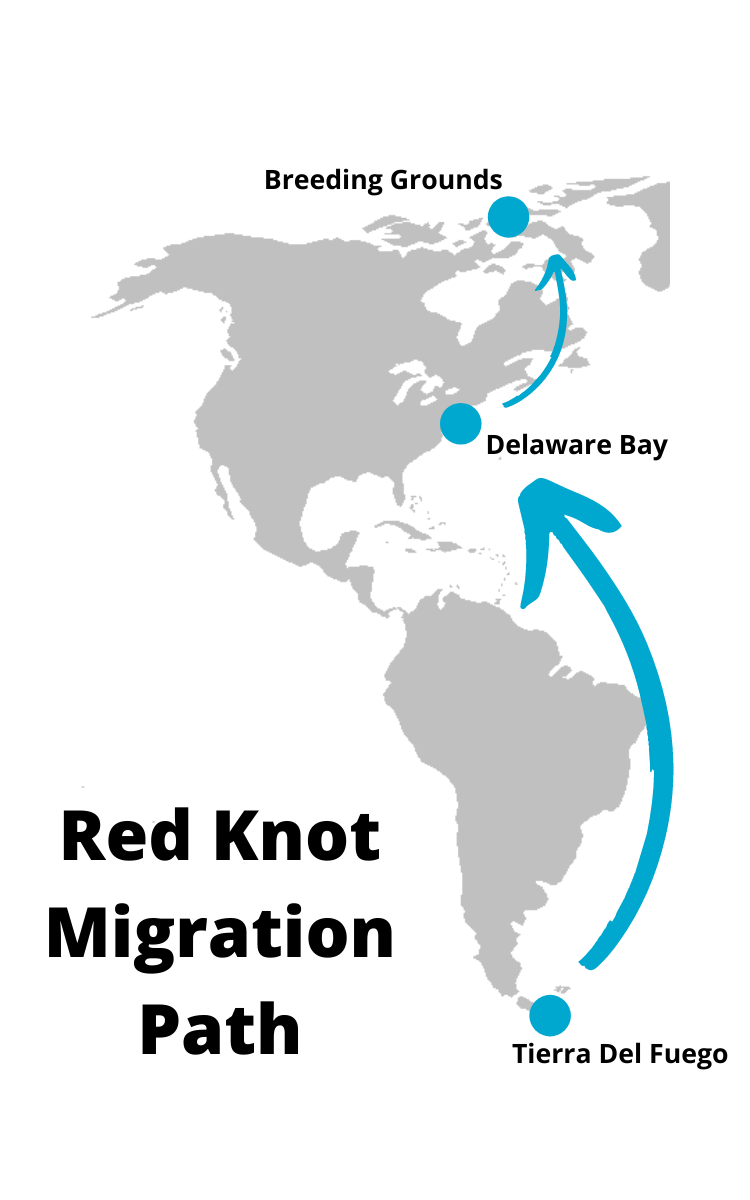
Red knots are currently considered to be a threatened species13, and horseshoe crabs are classified as vulnerable.14 Neither species is extinct, which means there’s still time to act!
Some Good News
The National University of Singapore developed an endotoxin test that does not require horseshoe crab blood. This new test method called Recombinant Factor C (rFC) has been commercialized by the multinational biotechnology company, Lonza. Its efficacy has been tested and proven15, and as such rFC tests are beginning to be adopted by pharmaceutical companies, replacing the need to for horseshoe crab harvesting! Eli Lilly, a multi-billion dollar pharmaceutical company, has already committed to transitioning 90% of its endotoxin tests to rFC.16 To learn more about rFC adoption, check out this article.
"If the rest of the pharmaceutical industry follows Eli Lillyʼs lead—tests its manufacturing water with rFC, and reduces its use of LAL by about 90 percent—thatʼd potentially leave an extra 450,000 to 540,000 horseshoe crabs untouched every year."
There's actions YOU can take to help horseshoe crabs:
- If you are ever walking on a beach and you see a horseshoe crab on its back, flip it over! Thousands of horseshoe crabs die every year from being stuck upside down. Horseshoe crab do not bite or sting; it is harmless to turn them over. The best way to turn them over without hurting them is to flip them using the edge of their shell.
- If you live in or near the Delaware Bay region, you can take part in a horseshoe crab population count. Every May and June, teams of volunteers count the horseshoe crabs on Delaware Bay beaches. These counts provide critical data points for understanding changes in horseshoe crab populations. More information on population count volunteering can be found here.
- For other ways to help horseshoe crabs, the Ecological Research & Development Group (ERDG) curated a list of action items. Check it out by clicking on the button below!
Together, we can help protect horseshoe crabs, and by extension all the other species that depend on them – including humans!
Let’s do this.
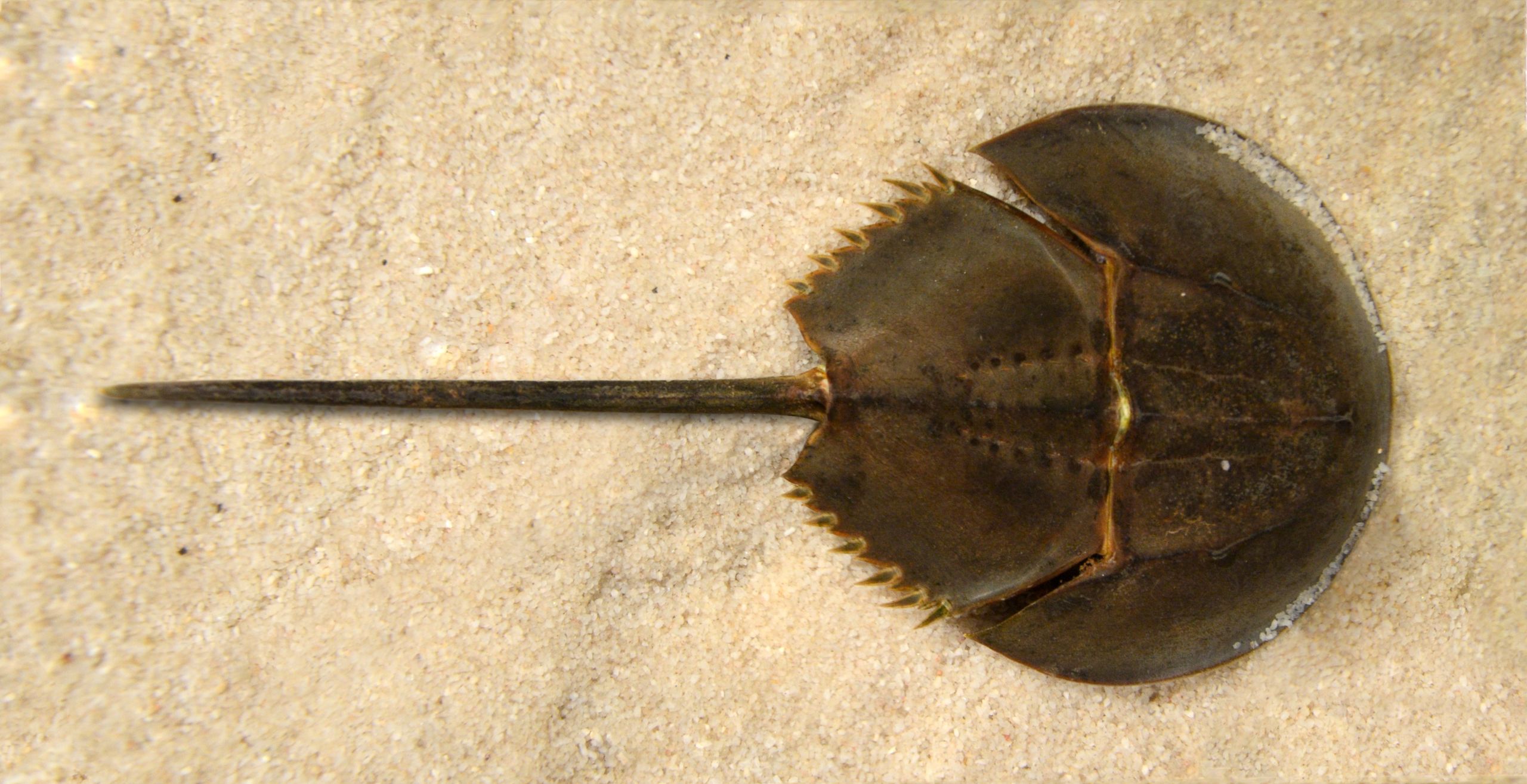
Sources
- Akshat Rathi, The horseshoe crab has survived the last five mass extinctions, but now it’s mysteriously dying (Quartz 2016) https://qz.com/781335/the-horseshoe-crab-has-survived-the-last-five-mass-extinctions-but-now-its-mysteriously-dying-across-asia/
- Natasha Ishak, How Harvesting Horseshoe Crab Blood Became The Multimillion-Dollar Industry You Never Heard Of, (ATI 2020) https://allthatsinteresting.com/horseshoe-crab-blood
- Ibid.
- Alexis Madrigal, The Blood Harvest, (The Atlantic 2014) https://www.theatlantic.com/technology/archive/2014/02/the-blood-harvest/284078/
- “2019 Horseshoe Crab Benchmark Stock Assessment Peer Review Report” (Atlantic States Marine Fisheries Commission 2019) pp. 3. 5cd5d6f1HSCAssessment_PeerReviewReport_May2019.pdf (asmfc.org)
- Ibid pp 41.
- Mark Botton. The Ecological Importance of Horseshoe Crabs in Estuarine and Coastal Communities: A Review and Speculative Summary. (Springer 2009). https://doi.org/10.1007/978-0-387-89959-6_3
- Ibid.
- Katie Hogg. 11 Facts About Horseshoe Crabs That Will Blow Your Mind.
- Ibid.
- Tom Warren. The Epic Migration of the Red Knot. (Farmer's Almanac 2019). https://www.almanac.com/epic-migration-red-knot
- Mark Botton. The Ecological Importance
- BirdLife International. Calidris canutus. (The IUCN Red List of Threatened Species 2018). https://www.iucnredlist.org/species/22693363/132285482
- D.R. Smith et. al. Limulus polyphemus. (The IUCN Red List of Threatened Species 2016). https://www.iucnredlist.org/species/11987/80159830
- Tom Maloney, Ryan Phelan, and Naira Simmons. Saving the horseshoe crab: A synthetic alternative to horseshoe crab blood for endotoxin detection (Plos Biology 2018). https://doi.org/10.1371/journal.pbio.2006607
- Deborah Cramer, Inside the Biomedical Revolution to Save Horseshoe Crabs and the Shorebirds That Need Them (Audubon 2018) https://www.audubon.org/magazine/summer-2018/inside-biomedical-revolution-save-horseshoe-crabs
